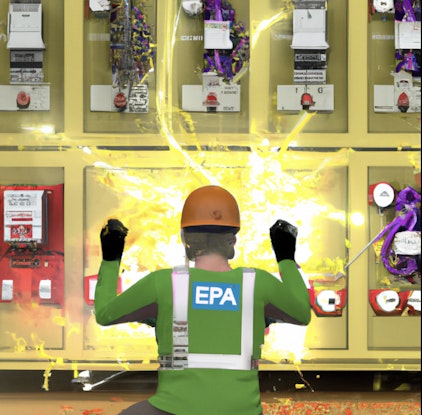


POWER SYSTEMS FAILS. N-1 REDUNDANCY SAVES THE DAY.
14 Feb 2023
Jonathan Carroll B.Eng( Electrical)
Director & Engineering Manager
E. Mashal and A. Keyhani, "N-1 Reliability Assessment of Electric Power Systems," in IEEE Transactions on Power Systems, vol. 18, no. 4, pp. 1528-1534, Nov. 2003. M. Chiradeja and P. R. Crolla, "Cost-benefit analysis of network capacity enhancement by N-1 contingency criterion," in IET Generation, Transmission & Distribution, vol. 9, no. 14, pp. 1831-1837, 12 11 2015.
Systems and N-1 Redundancy.
Imagine living without electricity for a day. No internet, no lights, no phone charging - it's difficult to picture life without it. But what if an entire city, or even a country, suddenly lost power for hours or even days? It may sound like a rare occurrence, but it's not unheard of. The consequences of a power outage can be catastrophic, ranging from economic loss to public safety concerns.
This is where N-1 redundancy comes in. N-1 redundancy is a power system design principle that ensures that the system can continue operating even if one of its components fails. The "N" represents the total number of components in the system, while the "1" represents the single component that can fail without causing a system-wide outage.
The importance of N-1 redundancy lies in its ability to maintain the reliability and resilience of the power grid. Without it, a single component failure could result in widespread outages that could take hours or even days to restore. This is why power system operators use N-1 redundancy to prevent power outages and improve the reliability of the electrical grid.
While N-1 redundancy does come with additional costs, it's a worthwhile investment when compared to the high cost of power outages. In fact, studies have shown that the benefits of N-1 redundancy often outweigh its costs, making it a smart long-term investment.
Who needs N-1: In addition to critical infrastructure such as power plants, N-1 redundancy is also used in a variety of facilities to ensure their continued operation. For instance, university and research facilities often rely on uninterrupted power supplies to maintain the integrity of their experiments and research. Hospitals require continuous power to keep life-saving medical equipment operational, and to provide climate control to preserve vaccines and other perishable medical supplies. Even airports require N-1 redundancy to avoid power outages that could result in cancelled flights, causing significant economic losses.
In conclusion, N-1 redundancy is an essential aspect of power system design. It helps to ensure that the power system can continue operating even if one component fails, thereby minimizing the risk of power outages and improving the overall reliability of the electrical grid. By implementing N-1 redundancy, we can avoid catastrophic consequences and maintain a steady supply of electricity to our homes and businesses.



